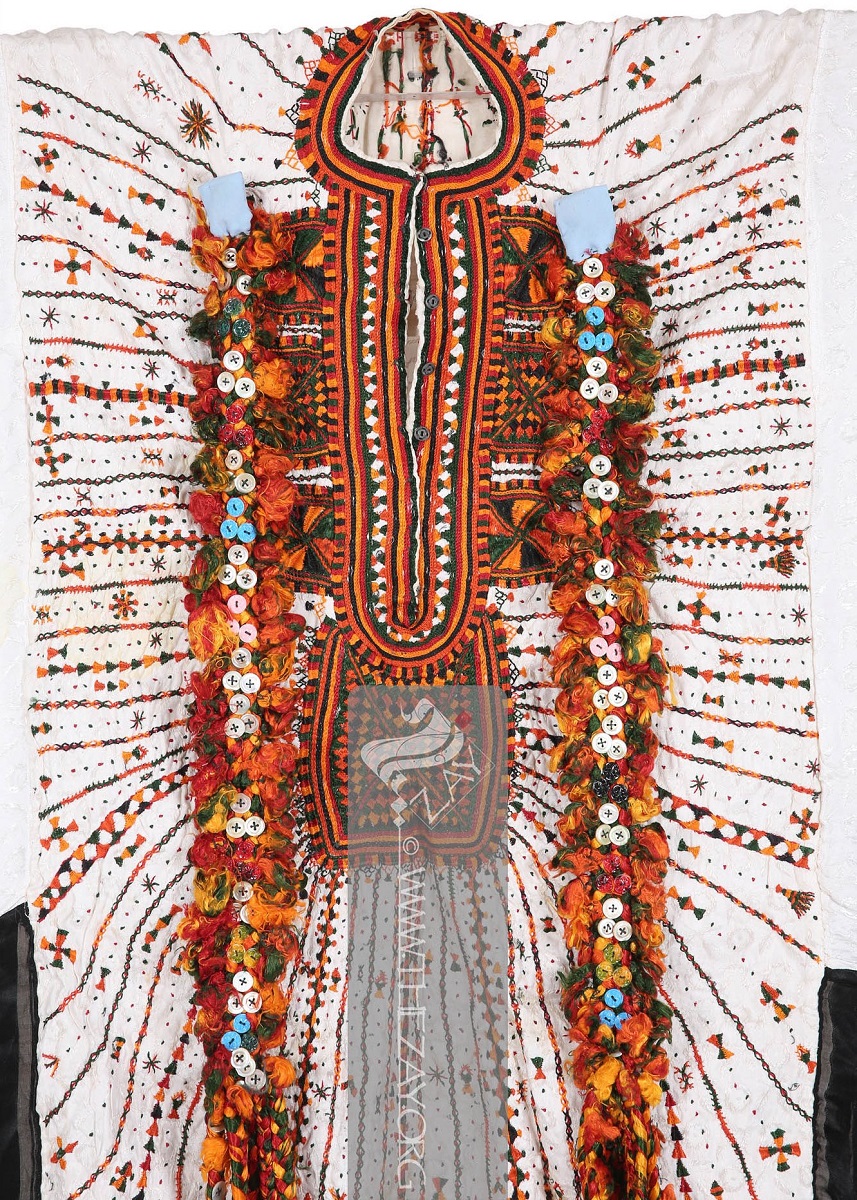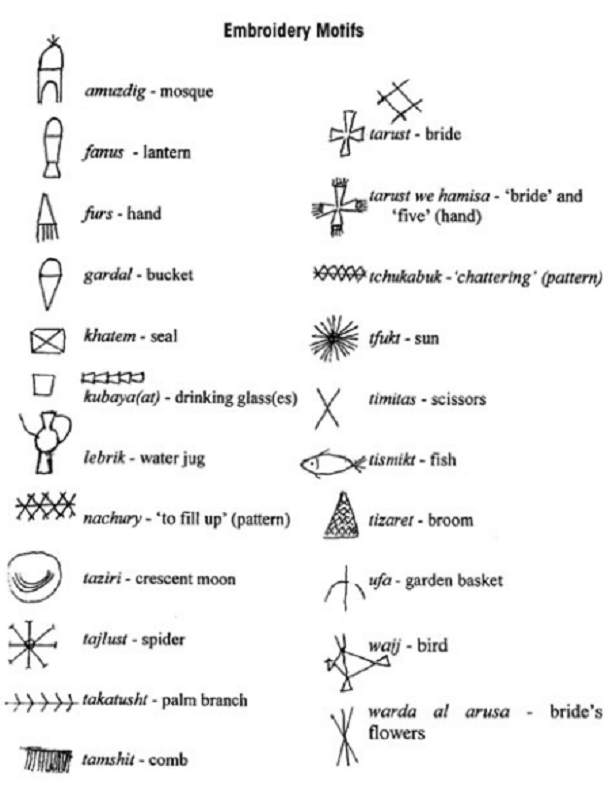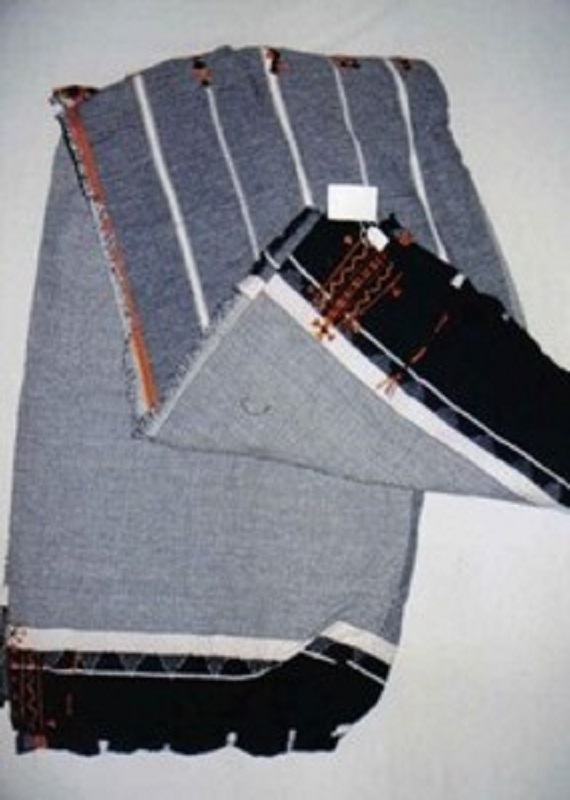




 The Siwa Oasis - an isolated settlement in Egypt close to the Libyan border at the edge of the Western Desert
The Siwa Oasis - an isolated settlement in Egypt close to the Libyan border at the edge of the Western Desert Asherah nuauk in The Zay
Zay: (Arabic: costume, Pl. azyaā’), a set of clothes in a style typical of a particular country or historical period. Collection (ZI500491 EGYPT)
Asherah nuauk in The Zay
Zay: (Arabic: costume, Pl. azyaā’), a set of clothes in a style typical of a particular country or historical period. Collection (ZI500491 EGYPT) Yemeni T-shaped tunic dress from The Zay
Zay: (Arabic: costume, Pl. azyaā’), a set of clothes in a style typical of a particular country or historical period. Collection
Yemeni T-shaped tunic dress from The Zay
Zay: (Arabic: costume, Pl. azyaā’), a set of clothes in a style typical of a particular country or historical period. Collection Embroidery details on the asherah nuauk Photo: The Zay
Zay: (Arabic: costume, Pl. azyaā’), a set of clothes in a style typical of a particular country or historical period. Collection
Embroidery details on the asherah nuauk Photo: The Zay
Zay: (Arabic: costume, Pl. azyaā’), a set of clothes in a style typical of a particular country or historical period. Collection Photo: From Vale's Siwa: Jewellery, Costume, and life in an Egyptian oasis
Photo: From Vale's Siwa: Jewellery, Costume, and life in an Egyptian oasis Detail of the gutan
Detail of the gutan
Gutan: gūṭan: (In Siwa Amazigh). Two braids are hung on the neckline of the Siwa bride's tunic dress, made of colorful silk threads, but the red color is the most prominent, and decorated with mother-of-pearl buttons, sequins, charms and horseshoes. The braids add an elegant appearance to the bride, bring her good luck, and support her desire to have children, according to ancient Siwa beliefs.
in The Zay Zay: (Arabic: costume, Pl. azyaā’), a set of clothes in a style typical of a particular country or historical period. CollectionGutan: gūṭan: (In Siwa Amazigh). Two braids are hung on the neckline of the Siwa bride's tunic dress, made of colorful silk threads, but the red color is the most prominent, and decorated with mother-of-pearl buttons, sequins, charms and horseshoes. The braids add an elegant appearance to the bride, bring her good luck, and support her desire to have children, according to ancient Siwa beliefs.
: bridal braided ropeGutan: gūṭan: (In Siwa Amazigh). Two braids are hung on the neckline of the Siwa bride's tunic dress, made of colorful silk threads, but the red color is the most prominent, and decorated with mother-of-pearl buttons, sequins, charms and horseshoes. The braids add an elegant appearance to the bride, bring her good luck, and support her desire to have children, according to ancient Siwa beliefs.
act both as symbolic protection and to emphasise the bride’s femininity and fertility. The braids are made from woollen yarns in the five colours of traditional Siwan embroidery: black, orange, yellow, green, and red. The main braids are made up of many smaller braids. The number of braids per strand is said to be 99, in reference to the names of God. They are also decorated with nacre buttons (tutintfukt). The gutanGutan: gūṭan: (In Siwa Amazigh). Two braids are hung on the neckline of the Siwa bride's tunic dress, made of colorful silk threads, but the red color is the most prominent, and decorated with mother-of-pearl buttons, sequins, charms and horseshoes. The braids add an elegant appearance to the bride, bring her good luck, and support her desire to have children, according to ancient Siwa beliefs.
are said to be a very old and important decoration for the Siwan bride and are still worn today, as part of the comparatively modernised wedding costume, to add richness to the wedding attire. Tarfutet shawl
Shawl: (Persian: shāl from Hindi: duśālā – Shoulder Mantle), a shawl is a South Asian version of a scarf
Scarf: (English), usually a rectangular piece of cloth loosely worn over the shoulders, upper body and arms, and sometimes also over the head. worn or wrapped loosely over the shoulders and is usually made of wool. Photo: TRC Collection 1997.0270
Tarfutet shawl
Shawl: (Persian: shāl from Hindi: duśālā – Shoulder Mantle), a shawl is a South Asian version of a scarf
Scarf: (English), usually a rectangular piece of cloth loosely worn over the shoulders, upper body and arms, and sometimes also over the head. worn or wrapped loosely over the shoulders and is usually made of wool. Photo: TRC Collection 1997.0270 The author, Jackie Barber, in a traditional Siwan dwelling. 2014
The author, Jackie Barber, in a traditional Siwan dwelling. 2014As a young Egyptophile, Siwa captured my imagination leading to my fascination with this desert culture and eventually led to me moving to Egypt in adulthood. I have always read as much as I could about Siwa and learned first-hand from the locals during my visits to the area. As the Zay Zay: (Arabic: costume, Pl. azyaā’), a set of clothes in a style typical of a particular country or historical period. Initiative’s researcher and librarian, I once again found myself reading about Siwan adornment. I obtained more information than what could fit in the limited space of the collection descriptions, thus this series on Siwa was born.